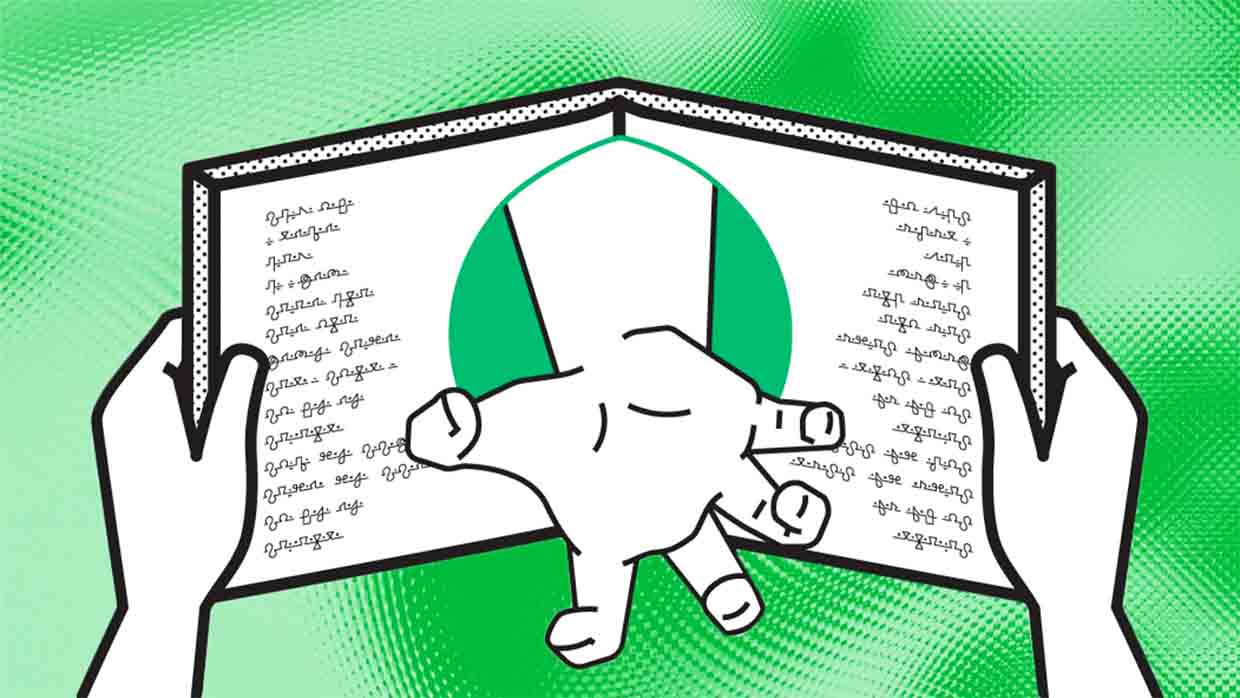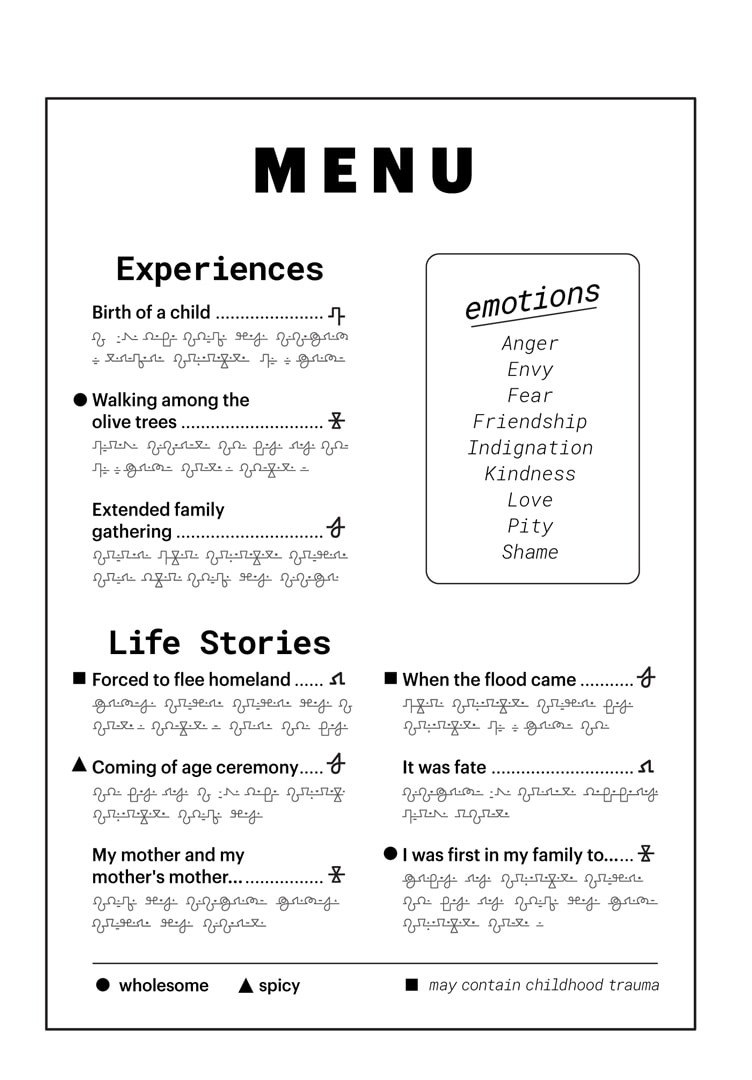- | 9:00 am
Experience design is the future of design. But what is it?
Designers often take a whack-a-mole approach to solving problems. The growing field of experience design wants to challenge that tradition.

Early on in Experience Design, author Abraham Burickson commits literary heresy: He asks you to not just grab a pen and jot the date and time down within the book, but to also tear a page out for an experiment.
It’s a big, uncomfortable ask for a fancy Yale University Press tome . . . but that’s kind of the point.
“What I wanted was for people to be looking self-consciously at the act of reading—and then hopefully self-consciously at everything else around them in order to consider how the experiences that they take for granted are designed everywhere, always, all the time,” he says.
“Experience design” is a nebulous term. It’s not UX design. And as Burickson himself points out, its definition tends to change depending on who you talk to about it. But of all the people I’ve ever asked about it as a design journalist, Burickson has the most intriguing answers.
And that’s perhaps unsurprising: A trained architect, since 2001 he has been the artistic director of Odyssey Works, a collective that creates fascinating bespoke performance experiences for an audience of just one person, based on long questionnaires, interviews with friends and family and an exhaustive research phase. (Author Rick Moody’s Odyssey—which took place over the course of four months and involved fake books and 100 synchronized dancers in Brooklyn—was heavily featured in a book of its own.)
In 2021, Burickson formalized his decades-long experiences with experience design by launching a certificate program in the topic through Odyssey, and he is currently also the lead experience design faculty member at MICA.
Here, he riffs on his craft—which he says is not just designed for designers, but myriad makers at large.
This conversation has been edited for space and clarity.
How did you find your way to experience design, and ultimately this book?
I was always kind of out of place. I was always wondering why I was thinking about things a little bit differently. I got into architecture because I’d been living in Turkey; I had left school for a while and gone to Istanbul to study with the Whirling Dervishes, which is a whole other chapter. But the unexpected thing that happened there was I would walk around the city and I would walk in and out of these incredible ancient structures, these mosques, these hammams, which are Turkish baths, and be just blown away by how changed I was by being in those spaces. And after that I said, “I have to be an architect. I have to make spaces that change people.”
And then when I went to architecture school, I found this wasn’t necessarily the consideration that most architecture students or professors had, although there’s certainly a strand within architecture that thinks about what might be called performativity or performance. Not energy performance, but the way a space performs and creates potential. And I started to see that I wasn’t entirely alone in the architecture field, that a lot of the great architects had been thinking about this. There’s this kind of switch that I was slowly beginning to make, which was thinking about the experience first, and then moving back into the form.
I’d always loved poetry, and I’d loved poetry because of what it did to me. When I first read Wallace Stevens, I felt changed. I wasn’t so concerned with the meter, I wasn’t so concerned with whether this was a villanelle, or that’s a sonnet. . . . In the end, I was really concerned with, what is the effect it has on one? And this concern was the same between architecture and poetry.
How would you broadly define experience design in your view of it?
First of all, I want to say it’s an emergent field. And that’s exciting. We’re here at the forefront of asking that question, and so depending on who you ask, the answer will be different. Essentially experience design is moving away from what I like to call thing-based design. Instead of saying, OK, I’m going to make this thing—say, a film—and then I’m going to figure out what it’s about, and then I’ll find out what the experience is, we flip it around. We say, I’m interested in making a certain experience. [For example,] experiencing the awe of nature. If I start there, maybe I’ll make a film about nature, but maybe I’ll sit around and say, Hey—maybe there’s a different tool set I could use, different collaborators I could work with to achieve that aim. And I’ll start engaging forest bathing and writing about nature. Maybe the experience goes on for three months, maybe it’s a minute. It’s just an inversion. We take the thing-based making process and we flip it around.

[Image: courtesy Erica Holeman]
Can you delineate experience design and UX design?
UX design, or user-experience design, predates experience design as a named practice. UX is primarily concerned with the way users interface with an interface, and there are a lot of brilliant experience design learnings inside user-experience design. It tends to be narrowly focused to designers who work with devices or objects or other types of interfaces, but it can be understood as a subset of experience design. Experience design considers the ultimate experience. Not, “My experience with this app”—but the aim and the purpose of it. If the app is a meditation app, a thing-based approach says, “I have a meditation app, I want people to be on it for X amount of time, and here are the various different buttons and colors that I need to use to make sure that happens.” Those are great tools, but the experience designer steps back, engages in a phase zero, and says, “What is my experiential aim? My experiential aim is for people to have more quiet in their minds, in their lives.” That would change radically the way we think about this app: Perhaps this app is not the whole thing. It cannot be the whole thing. Perhaps this app is only a piece of the puzzle, and we have to consider a much broader collaboration with our audience than just what the app has to offer. Experience design says: Our aim is quiet. Our aim is meditation. We have a remit right now perhaps to make an app, but we need to start partnering with maybe an ashram, maybe some mindfulness trainers, maybe the HR department at the company that we’re working at, so they can make space for this to happen.

[Image: courtesy Erica Holeman]
In the book you note that experiences are not problems to be solved. Can you riff on that a bit as it pertains to traditional design?
It’s really interesting, isn’t it? The design [world] is continuously saying, “We’re going to solve a problem. We’re going to solve a problem.” And why wouldn’t it? Design solves problems. My feet are cold; I designed a pair of socks. [Laughs.] And that’s wonderful, and we need to solve problems. But if you zoom out and say, OK, all we’re doing is solving problems, we have a whack-a-mole approach to our lives with design.
We’re just waiting for the problems to pop up, or in some design methodologies, aggressively trying to define a new problem. I don’t know if you’ve ever been in a bad relationship, but sometimes the problem with a bad relationship is one of the people is out there trying to find a problem to solve. We don’t want that in our relationships. Why do we want that in our design?

[Image: courtesy Erica Holeman]
You described experience design as an emergent field. How far back does it go as a discipline?
I think it’s really hard to say. And what I’ll suggest is that on the one hand, these practices go all the way back. The practices in experience design are not essentially new. They are the practices of telling a story around the campfire. In fact, if you look at the way what we now call “design” happened for millennia, it was in a much more experiential way. I’m trained as an architect. You look at medieval architecture practices, you look at the closeness between a builder and a community, and you understand that they were in relationship—this idea of the architects in their office sending plans out to some builders to build somewhere they’ve maybe never visited is entirely new. It’s a product of the last couple hundred years.
Our design practices of the industrial and post-industrial age are the aberration. If you look at [people] talking about experience design, there have been trickles here and there since the ’90s, but it’s only been picking up steam as an idea [of] something that has job titles over the last decade or so.
Why now?
So much in the world of tech, and [also] the kerosene that got thrown on the fire of this was the pandemic, when we all started recognizing that something radically different had happened in our experience of life. I was teaching in-person at MICA before the pandemic. And like everything else in the world, we got thrown online, and the assumption was that it’s all the same—in fact, the readings are just PDFs now; that’s easier. You don’t have to commute; that’s great. Students have no excuse to miss class; even if they’re sick, they can be there, which was sort of the point. And it’ll be great. It was terrible, and widespread mental health problems abounded. And the thing-based approach to understanding this was baffled.
And so I worked with some of my students in my experience design class to think about what the problem was. They studied their days, and they asked: When are they in school? When are they in a mindset, a zone of thinking about these ideas, and when are they not? And then they compared it to their memory of when they were there in person. And what we found was there were all these experiential things that were more important than the design of education that we were focused on. There was no chit-chat before class in the elevator or in the hallway, there wasn’t any walking around to each other’s desks, there wasn’t any meeting somebody in the green in front of the building, there was no hanging out with the professor after class just to ask an off question. All of these things were part of the experience design, but not part of the thing design. I think we saw this in a million ways during the pandemic, and the interest in this exploded.
Who’s your intended audience for the book?
Essentially I would like anybody who is making, and who is perhaps suspicious of the way that they’ve been taught to be making, to take a look at the book. In the experience design certificate program, which I run with Ayden LeRoux, we have people from all walks of life, by design. We have a lot of artists, of course, and theater makers, and designers, but also in this cohort we have somebody who runs an entrepreneurial incubator for Black entrepreneurs in Detroit. And we have social activists and we have somebody at a bank who’s trying to figure out how to reorient the bank’s resources toward sustainability in an experience design way. I think all these people who come to this from these various disciplines came because they were essentially frustrated with the way things are done—and that’s the people I’m trying to reach out to. I think we can do things quite differently.

[Photo: courtesy Abraham Burickson]







































